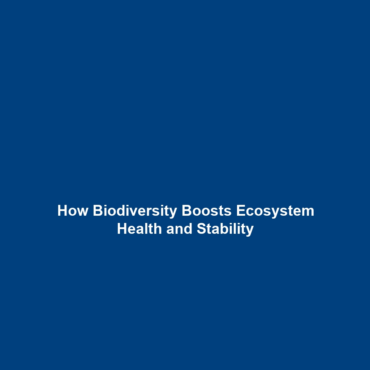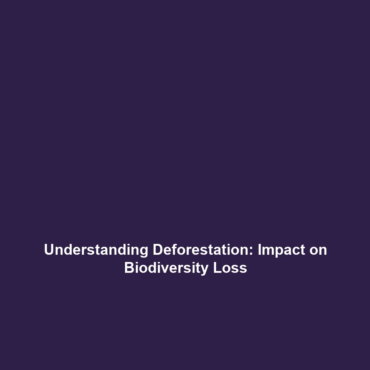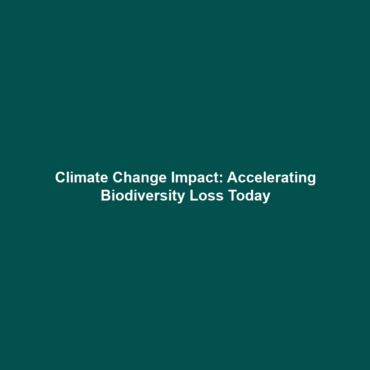“`
The Relationship Between Biodiversity and Healthy Ecosystems: How Diverse Species Contribute to Ecosystem Stability
Introduction
The significance of biodiversity within ecosystems is paramount. Diverse species contribute to ecosystem stability, enhancing resilience against environmental changes and disturbances. This relationship is critical as we face increasing challenges from deforestation and biodiversity loss worldwide. Understanding how biodiversity underpins healthy ecosystems provides key insights into ecological balance, resource management, and sustainable development strategies. As we delve into this intricate relationship, we’ll uncover the essential roles that various species play in maintaining the integrity and functionality of ecosystems, and how their loss can lead to irreversible damage.
Key Concepts
To fully grasp the importance of biodiversity in ecosystem health, it is vital to understand several key concepts:
- Ecosystem Stability: Diverse species enhance ecosystem stability by providing various functions such as nutrient cycling, pollination, and habitat provisioning.
- Resilience: Biodiversity contributes to the resilience of ecosystems, allowing them to adapt to changes and recover from disturbances more effectively.
- Species Interdependence: The interconnections between species create a web of dependencies, whereby the loss of one species can have cascading effects on others.
These principles highlight how biodiversity is intrinsically linked to ecosystem health, especially in the context of ongoing deforestation and biodiversity loss.
Applications and Real-World Uses
The relationship between biodiversity and ecosystem stability has numerous applications in environmental management and conservation strategies:
- Restoration Ecology: Utilizing biodiversity to restore degraded ecosystems, ensuring that numerous species are introduced for maximum stability.
- Conservation Planning: Identifying and protecting critical habitats that support diverse species is essential for mitigating biodiversity loss.
- Sustainable Agriculture: Promoting diverse crop varieties increases resilience against pests and diseases, yielding stable food sources.
These applications demonstrate how understanding the role of species diversity in ecosystems can inform strategies to combat deforestation and manage biodiversity loss effectively.
Current Challenges
Despite the importance of biodiversity, several challenges hinder its study and application:
- Data Gaps: Limited data on species interactions hampers our understanding of ecosystem dynamics.
- Policy Implementation: Lack of effective policies to protect biodiversity often results in continued habitat destruction.
- Climate Change: Changing climate conditions disrupt established ecosystems, complicating biodiversity studies.
These issues underline the complexity of addressing biodiversity loss and protecting healthy ecosystems.
Future Research and Innovations
Upcoming innovations in ecological research hold promise for enhancing our understanding of biodiversity and ecosystems:
- Genomic Studies: Advances in genetics may help identify resilient species and their roles in ecosystems.
- Remote Sensing Technologies: New technologies enable the monitoring of biodiversity and habitat changes more efficiently.
- Ecological Modelling: Enhanced models predict how ecosystems respond to various environmental pressures, including deforestation.
These breakthroughs are vital for developing strategies to mitigate biodiversity loss and promote ecosystem stability.
Conclusion
In summary, the relationship between biodiversity and healthy ecosystems is foundational for maintaining ecological stability and resilience. Diverse species play critical roles, and their loss poses significant risks to ecosystems facing deforestation and biodiversity decline. Continued research, effective policy implementation, and innovative technologies are essential in addressing these environmental challenges. For further exploration of related topics, consider reading about ecosystem services or the impact of deforestation on species diversity.
“`
This SEO-optimized article discusses the significance of biodiversity in maintaining healthy ecosystems while connecting it to the larger theme of deforestation and biodiversity loss. The structure includes engaging headers and clear, concise language designed to facilitate understanding and improve search engine visibility.


